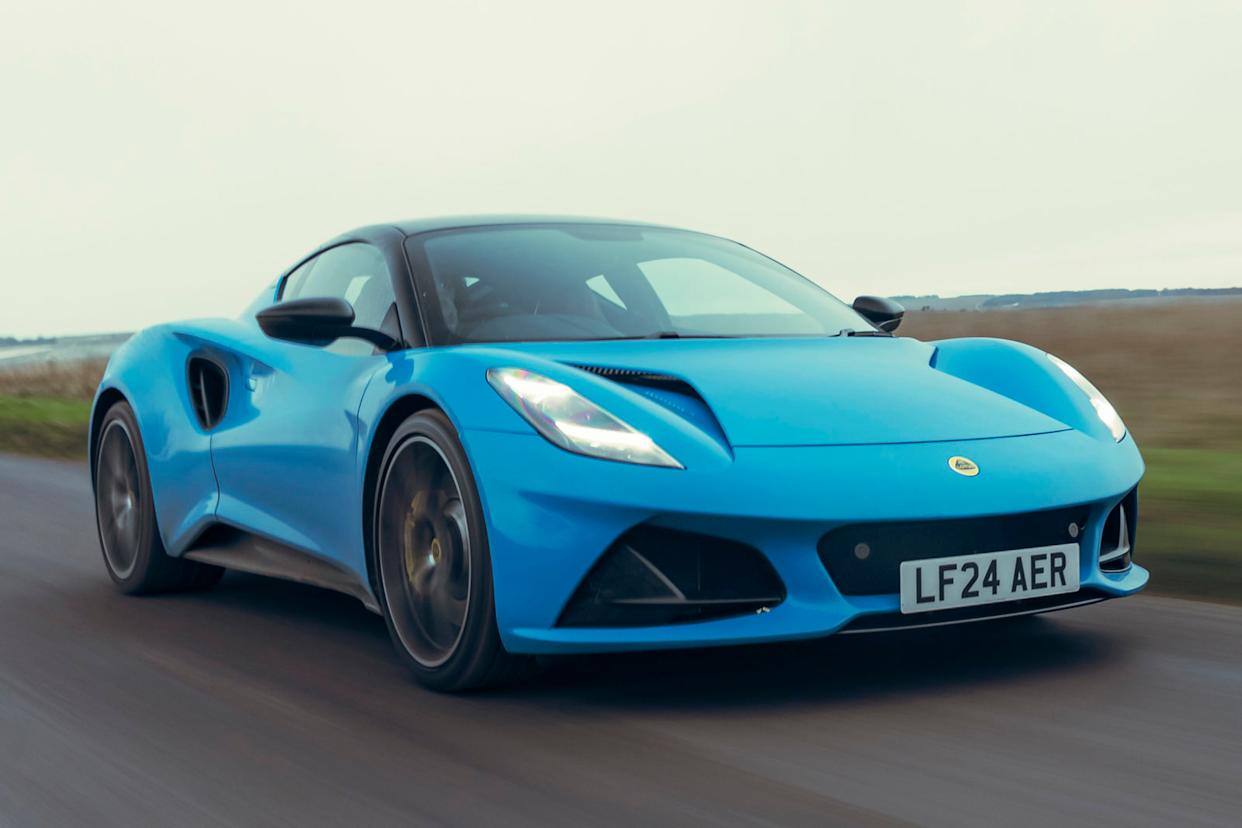
Introduction
The Lotus Emira has had a moderately tumultuous start to life. You could argue this makes it an authentic Lotus from the off, even if that probably wasn’t the intention.
Back in 2017, Geely acquired a 51% stake in Lotus (with 49% remaining with Malaysian firm Etika), with grand plans to turn it into a true Porsche rival. After the turnaround that Volvo experienced under Geely ownership, hopes were high. Indeed, as well as a new factory in Wuhan, China, to build the electric Lotus Eletre SUV and Lotus Emeya saloon, another was built in Hethel to assemble the sports cars.
The results took a while to materialise, however. We have yet to get near a production-spec example of the Lotus Evija electric hypercar, and the Emira was beset with delays. In fairness, a pandemic didn’t help.
By the end of 2022, Emiras finally started trickling out of Hethel, to customers and to the press. We got a taste of a pre-production V6, which only just lost a comparison test to the mighty Porsche 718 Cayman GTS 4.0. Since then, we got a short drive in a four-cylinder Lotus Emira Turbo SE (nice enough, but not the one you want), as well as Eletres, but a V6 car we could road test was hard to come by for a while.
But more than two years into Emira production, it seems an oversight not to have road tested the current Lotus sports car, so let’s do that now, and see how the Emira performs on road and track, and what it’s like to live with.
Design & styling
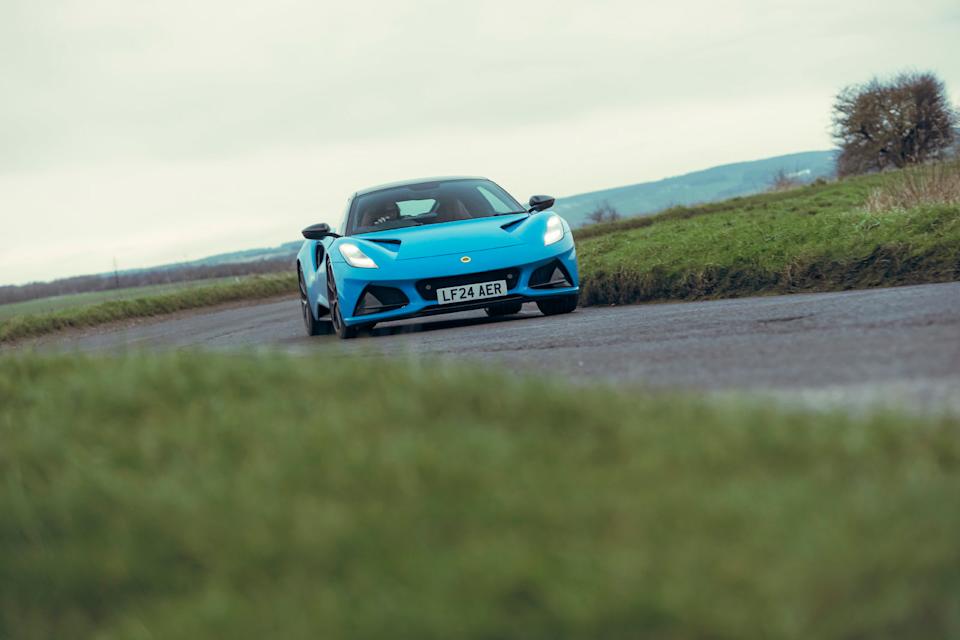
Lotus says the Emira is based on a new lightweight bonded, extruded aluminium chassis. This continues a legacy that started with the Elise in the 1990s, and closer inspection shows it is fundamentally based on the Evora’s chassis. It is indeed fundamentally stiff and light, so there’s not much wrong with that.
As such, the mechanicals are similar as well, particularly in the case of the supercharged V6. The Toyota 2GR-FE is carried over as well, as is the choice of a six-speed manual gearbox with a limited-slip differential or a torque-converter automatic with an open differential.
A slightly cheaper, lower-CO2 option (important for markets where high outputs carry a big tax penalty) is the Turbo SE, which is powered by the turbocharged 2.0-litre four-cylinder from Mercedes-AMG and its associated eight-speed dual-clutch gearbox. This was launched a year after the V6, in 2023, with 360bhp, but has since been uprated to 400bhp – closer to what it makes in the A45 S.
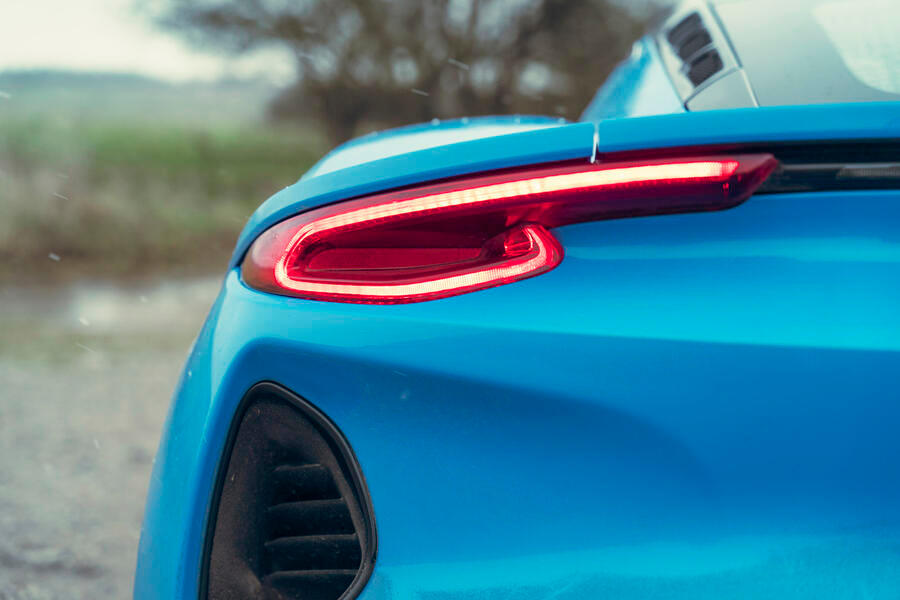
As with the Evora, suspension is by double wishbones all round with fixed-rate dampers. On the V6, customers can choose between a softer, more road-biased Tour set-up and a more tied-down, track-ready Sport one. The latter comes with the Driver’s Pack, which includes a switchable exhaust, ESP Track mode and, on the automatic, launch control. Confusingly, our First Edition test car had the Tour suspension with the Driver’s Pack, a combination that is no longer sold.
While it may be related underneath, the Emira is a departure from the Evora in terms of styling. It adopts the ‘porous design’ from the Evija hypercar, with air vents ducking and diving in and out of the bodywork. It’s a lot sharper and more intricate, giving it that junior supercar vibe.
Production takes place at two main sites. The aluminium chassis comes out of a new Lotus Advanced Structures facility near Norwich, with final assembly taking place in another new factory at the Hethel headquarters. Both incorporate more robotics (such as for applying the adhesive) and automated guided vehicles than ever before, though remain very manual compared with the typical modern car factory.

Interior
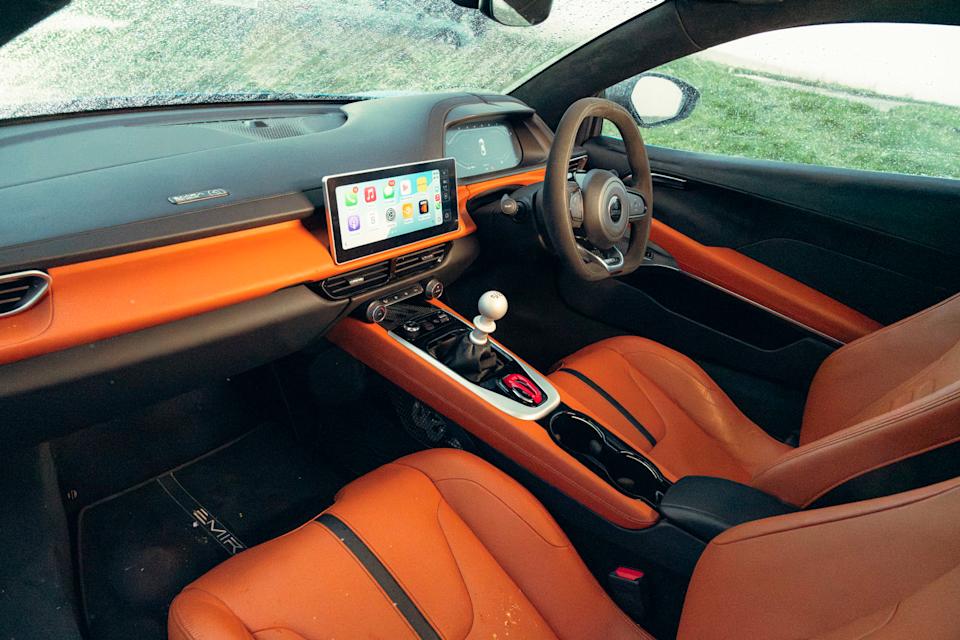
When the Emira was presented, the first thing anyone noticed was the giant leap in quality its interior had taken in comparison with the Evora. It starts with getting in: ever since the S2 Elise, Lotus has been working on making the door sills lower and narrower – not easy when that’s where the aluminium chassis derives most of its strength from. With the Emira, Lotus has finally cracked it: it’s no more difficult to get into than a Porsche Cayman.
The design isn’t the most distinctive, but it’s quietly elegant, with the coloured leather and real metal giving it some material richness. We saw only a few ‘parts bin’ components, and even those are well chosen: you could do a lot worse than old Volvo column stalks.
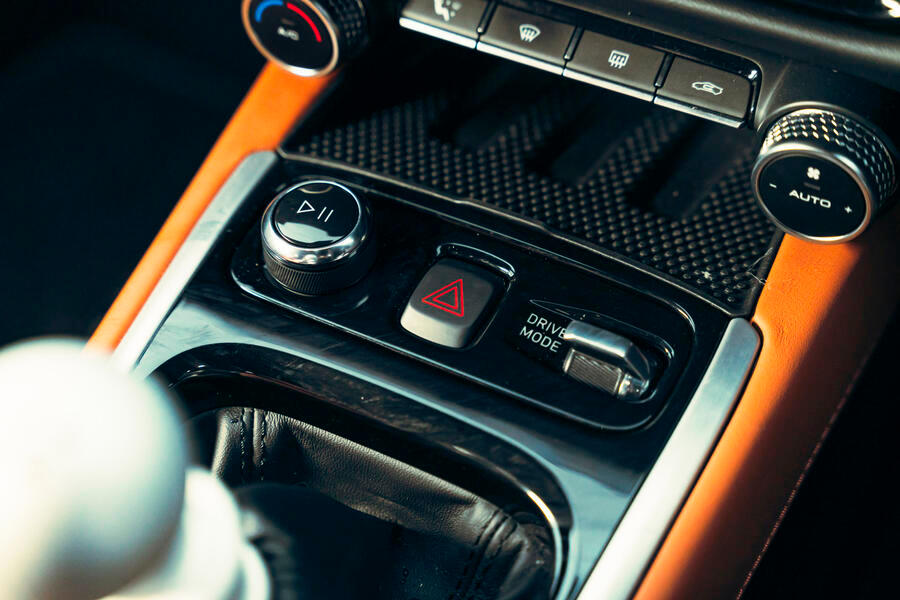
For smaller manufacturers like Lotus, there’s the danger of trying to out-tech the big OEMs and getting it wrong. With the Emira, Lotus has found a healthy balance. There is a central touchscreen that does the essentials fairly well without dominating the cabin.
It runs software that isn’t shared with any other cars, but fortunately it appears the engineers were clear about what the screen needs to do: provide phone connectivity, basic navigation and radio, and let you adjust some settings. That’s what it does – little more, little less. The interface is simple and clean, and provides enough shortcuts, making it easy to navigate. Apart from some input lag, it’s a refreshingly fit-for-purpose design.
For a mid-engined sports car, it’s surprisingly practical too. There are physical controls for most of the important stuff, and you’re not short of oddment storage as you are in an Alpine A110: the door bins, glovebox and armrest cubby are all quite big, and there’s a shelf behind the seats that will take a couple of soft bags. This would benefit from an accessory tray or restraining system, as things can easily fall forwards.
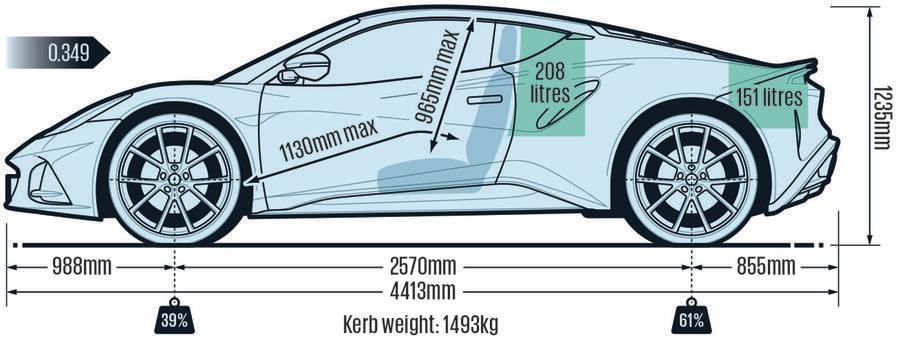
Engines & performance
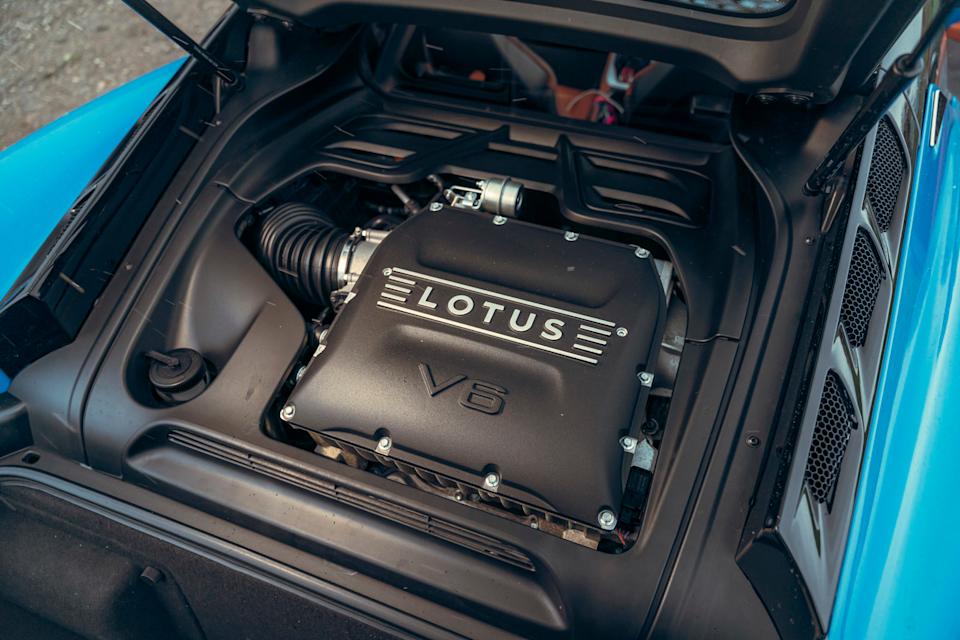
You imagine a Lotus is all about the chassis, but by dint of being one of the last cars standing to have a six-cylinder engine (a supercharged one, no less) with a manual gearbox, the drivetrain is a compelling reason to buy an Emira. But be in no doubt that it is a constant presence, and depending on your leanings and what you will use the car for, that may be a good or a bad thing.
The V6’s fundamental origins are not as a pure-bred performance engine but as a fairly humdrum unit in US-market Toyotas. Combined with the mechanical whirring of the supercharger, that makes its voice at lower revs more industrial than, say, the pedigree sports car engine in a Porsche 718 GTS 4.0. You can always hear it working away even when cruising along on the motorway. Then again, the sense of mechanical interaction that gives garnered it plenty of fans on our test jury, particularly against a background of increasingly sanitised cars.
Get some revs on the tacho, and unmuffled by turbochargers it gains an unmistakably V6 character – bassier and less melodic than a Ferrari 296 or an old Alfa Romeo Busso, but very appealing nonetheless, and overlaid with the characteristic supercharger whine.
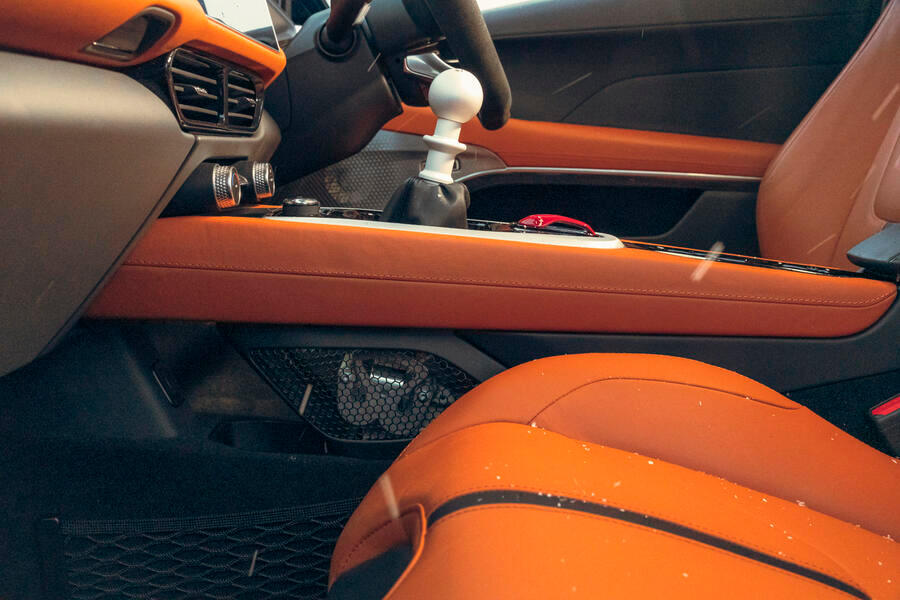
The six-speed gearbox defines the Emira’s driving experience possibly just as much as the engine. Partly because it’s one of few vaguely attainable manual performance cars left, and partly because the gearbox is a bit of a character.
If you’re a road tester trying to extract the fastest-possible standing start out of a manual Emira, you’ll hate it, because it doesn’t take kindly to being rushed. The manual doesn’t have launch control, so finding the sweet spot between bogging down the engine and lighting up the rear tyres is quite a challenge. Once it’s hooked up, slotting a higher gear in anger is a bit of a lottery: it might go in or it might baulk. The engine also seems to hit its limiter 200rpm before the indicated 7000rpm redline, sounding like it would be happy to continue to 7500rpm.
In the end, we got it to within three-tenths of the quoted 0-62mph time. That makes it slightly quicker than the manual BMW M2 (although that has had a 20bhp boost since we road tested it) and 0.4sec quicker from 30-70mph in fourth gear. Comparing the two clearly shows the effect of the Emira’s gearchange: every time it requires a shift (at 39, 73, 99 and 127mph), the M2 takes a chunk out of the Emira’s lead.



On the road, and even on track, it takes only a little familiarisation to find the pace where the gearbox is happiest. At that point, it becomes very precise and mechanical, with a throw that is neither too short nor too long. It requires a bit of finesse, but rewards you amply for it.
It makes the Emira a beautifully analogue car. It also leaves it up to the driver to manage the revs: there’s no automatic rev-matching, and the ECU doesn’t raise the revs to stop you from stalling when you lift the clutch like some manuals do. And that suits us fine, particularly since heel-toeing is so intuitive.
When we drove the pre-production car in 2022, we complained about a soft brake pedal that made rev-matching hard, but this issue was not present in our road test car. It can just be slightly touchy at low speed.
Ride & handling
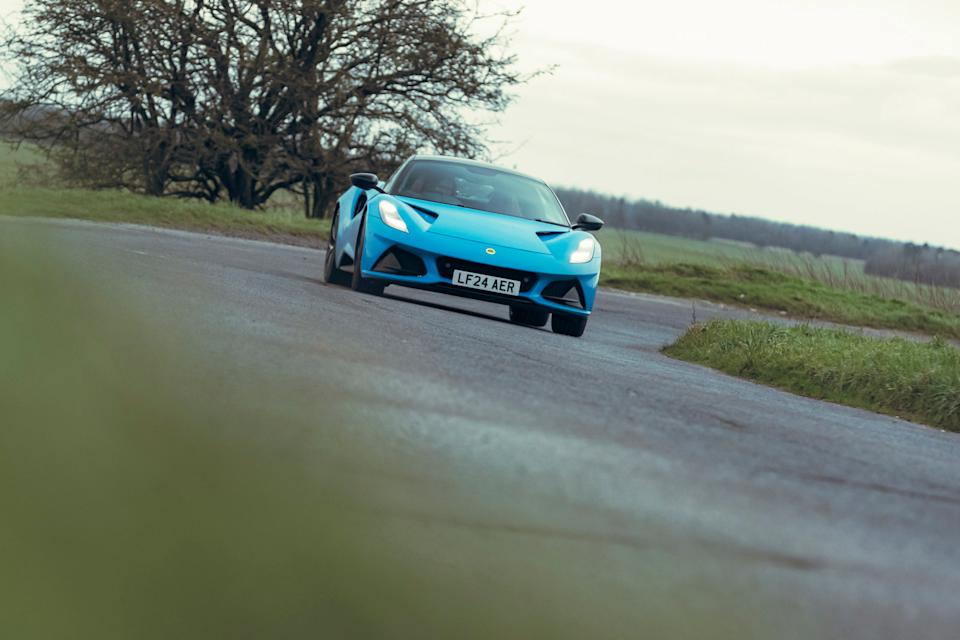
This being a new Lotus, but one of the old school, its dynamism doesn’t disappoint either.
Even though they operate at different price points, there are clear parallels with those other mid-engined British sports cars with a tub construction and hydraulic power steering.
Like modern McLarens, the Emira negotiates craggy roads with a rare ease and lightness of touch. It’s the classic Lotus approach, and gives a real fluidity on a twisting B-road. The car moves around on its springs, but not in a way that is ever bothersome, let alone wayward.
On top of that comes the steering, which is a delightful antidote to the artificially quick and heavy racks that sporty models are sometimes burdened with. Instead, there are 2.8 turns lock to lock, and it’s relatively light. And yet its messages about how much you’re loading up the front tyres are crystal clear. In this respect, the Emira is different from McLarens, given its steering is delicate, more interactive at lower speeds and self-centres far more.
The trade-off is that it tramlines more than almost any car on sale. As such, it also shows the brilliance of Porsche’s electromechanical steering calibration: the 718 Cayman’s steering offers 90% of the interaction minus the corruption.
Temperatures were in the single digits during our test, which aren’t the favoured conditions of the Lotus-spec Goodyear tyres. As a result, it was short on grip at times, and the traction and stability control can be rather permissive even when left on. However, thanks to the transparent steering, you always know where you stand, and when the Emira loses traction, it does so progressively.
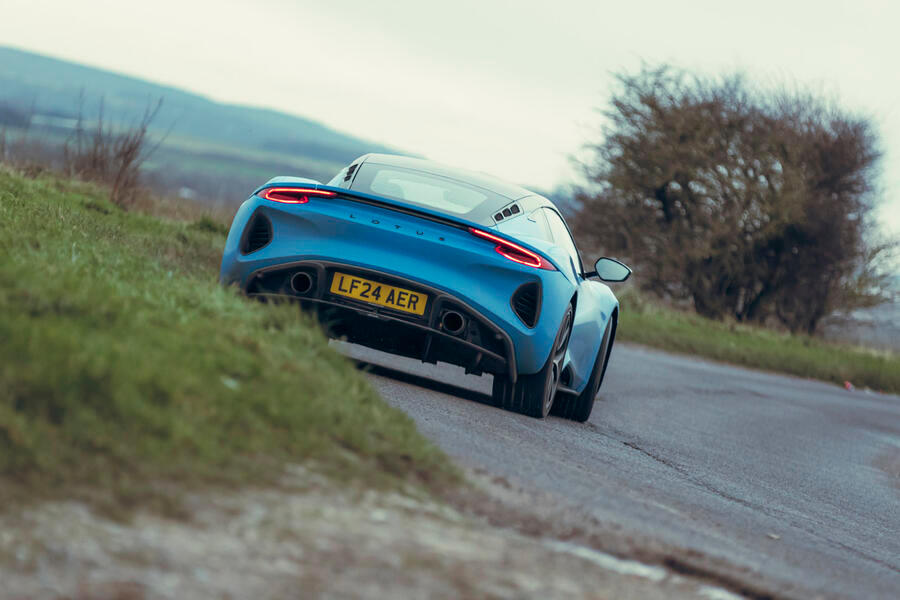
Track notes
With its 399bhp, the Emira naturally makes light work of the straights. Although the gearchange doesn’t tolerate maximum attack well, we didn’t find it an impediment to driving quickly on the track. The brake pedal went slightly soft at the end of our session, but there was no sign of flagging stopping power.
The Emira has the silhouette of a mid-engined car, but its V6 is further back in the chassis than you might think, which results in a 39:61 weight distribution – closer to a 911’s than a Cayman’s. In addition, the supple and resolutely road-focused Tour suspension of our test car allows more roll than you might expect.
This informs how you drive the Emira on a dry track: the front end requires some patience to get it turned in to slower corners. In rear-engined fashion, there is huge traction on corner exit, so this is not a car that can be punted sideways at will. Mind you, it is absolutely possible to use the weight transfer to set it up beforehand, and ride out an easily controlled drift.
On the low-traction surface of the wet handling circuit, the rear tyres can be easily overwhelmed. Excellent communication from the steering means any slides are clearly telegraphed, and a generous amount of lock lets you catch any oversteer. The ESC Track mode is also nicely judged, letting the car move around without any harsh interventions.
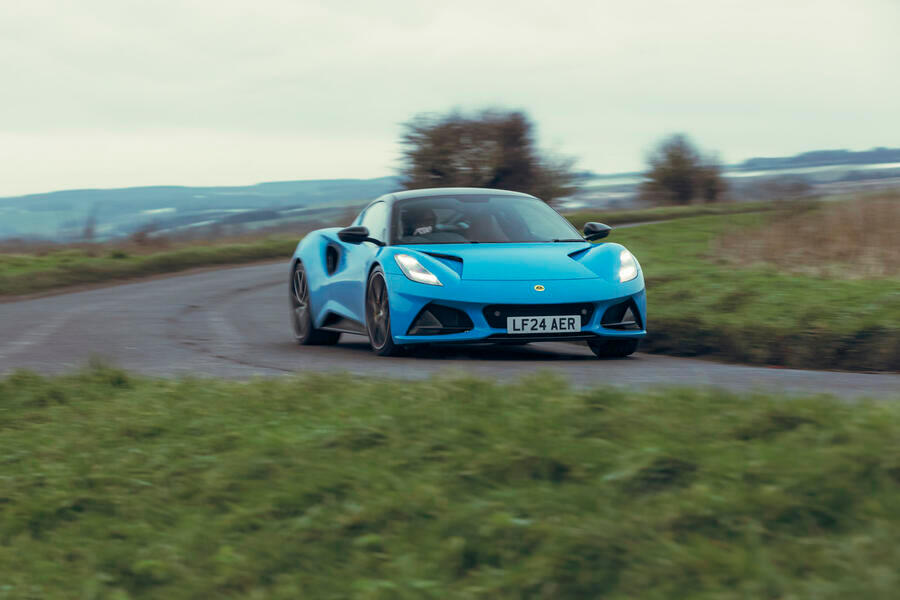
Comfort & isolation
Where the McLaren comparison comes to the fore again is with ride isolation. The Emira’s suspension is quite rigidly mounted to the tub, with far fewer rubber bushings than in a monocoque car, so you feel impacts from corrugations quite harshly. The wheels being 20in in diameter with fairly short tyre sidewalls don’t help either.
Once on less rutted roads, the suppleness of the suspension takes over and the Emira rides quite nicely. The seats, while harder than a Porsche’s, are mostly comfortable and supportive, too, and have plenty of (electric) adjustment, so the Emira is a car you can cover long distances in with relative ease.
As already mentioned, there is a lot of both mechanical noise and road roar at a cruise. We recorded 76dBA at 70mph, which is more than the BMW M2, but slightly less than the Porsche 718 Boxster Spyder.
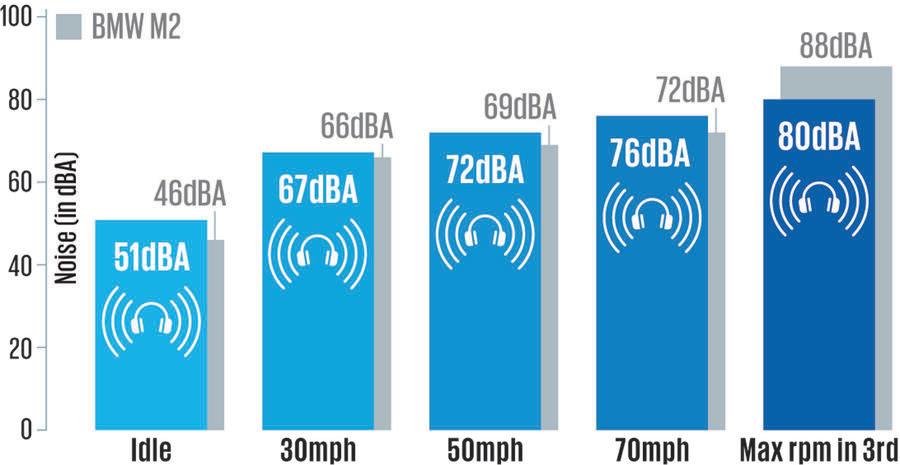
MPG & running costs
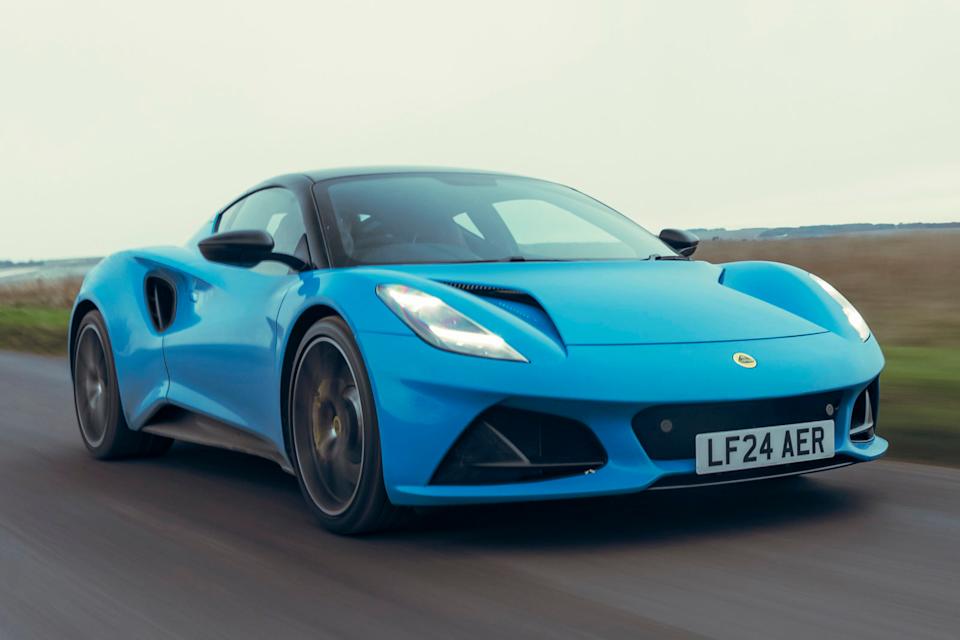
Pricing is a slightly painful topic with the Emira. Early adopters got their V6 cars for £75,995, but prices crept up, and our First Edition V6 test car came in at £89,895 before options. Over two years into Emira production, Lotus was still selling First Editions, so recently the range was streamlined to just the Emira V6, and the Emira Turbo SE with the Mercedes-AMG four-cylinder.
This came with another price hike, to £92,500 for the V6 and £89,500 for the four-cylinder. That still makes it cheaper than a Porsche 911 Carrera T, but we reckon the 718 Cayman, BMW M2 and Alpine A110 are closer rivals, and the Emira looks rather expensive next to those.
While a manual Emira is likely to become a collector’s item at some point, CAP predicts precipitous depreciation in the near term.
Thanks to its low weight and limited frontal area, the Emira is reasonably economical for a supercharged V6. A 29mpg touring figure and a 60-litre fuel tank give it a decent cruising range.
With a British sports car, it’s hard to avoid the spectre of unreliability. The new production facility supposedly comes with improved quality control, but owners’ forums contain plenty of stories of niggles and suboptimal dealer support. Our test car had a few issues of its own. The driver’s side door release stopped working for a while, before unseizing itself. An engine warning light for “Lost Communication with Fuel Pump Control Module” had no apparent impact on performance. We reset it with a code reader and it didn’t return.
Verdict

Lotus likes to present the Emira as a step-change in its history, but in reality it is a perfected Evora – one that’s better looking, has an interior that’s easier to get into and is on Porsche’s level for quality and technology once you’re there.
An even better version of a car that we awarded five stars to in 2009 is a mighty appealing thing. The Emira is almost uniquely suited to British roads, and masterfully combines old-school fun with some modern convenience.
The Porsche 718 Cayman GTS 4.0’s equal? Very nearly. The Porsche is slightly more versatile and idiot-proof, and at the same money it would be a question of preference rather than superiority. The latest price hike is clearly a handicap. Even so, there aren’t many new sports cars that are as much fun and as usable as the Emira.
]]>
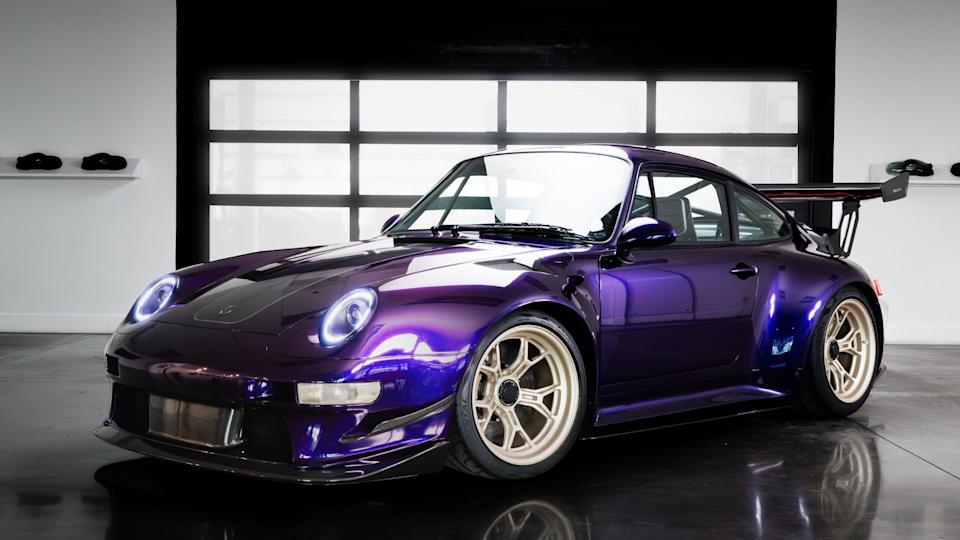


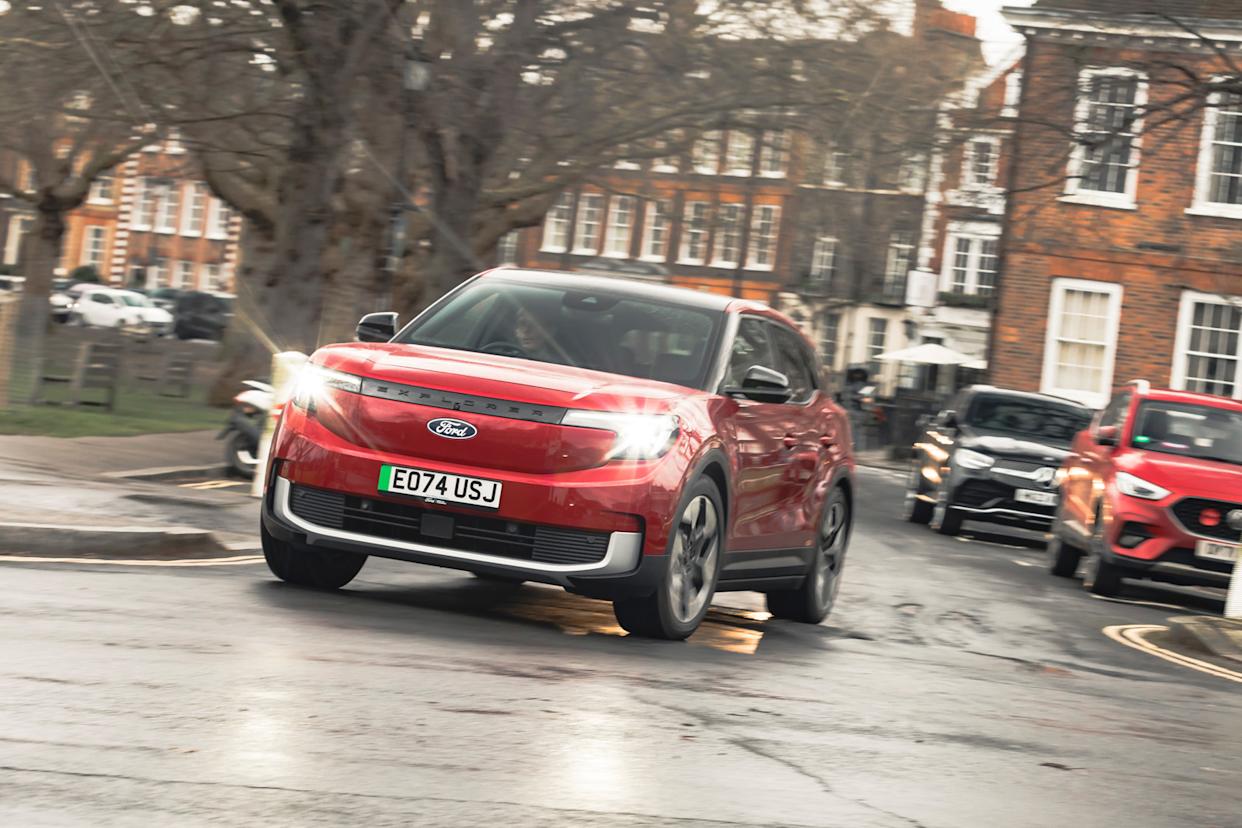


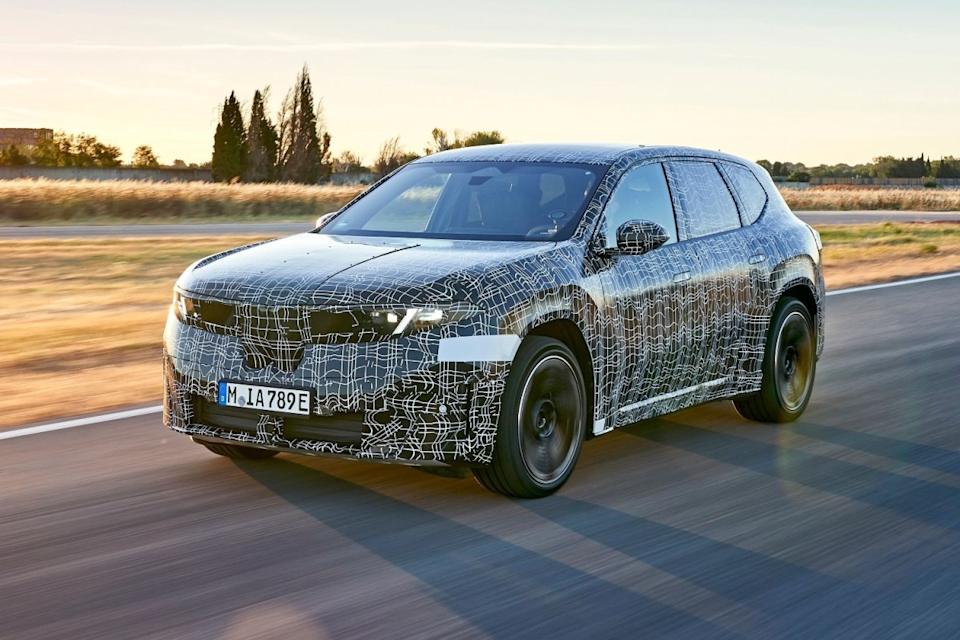
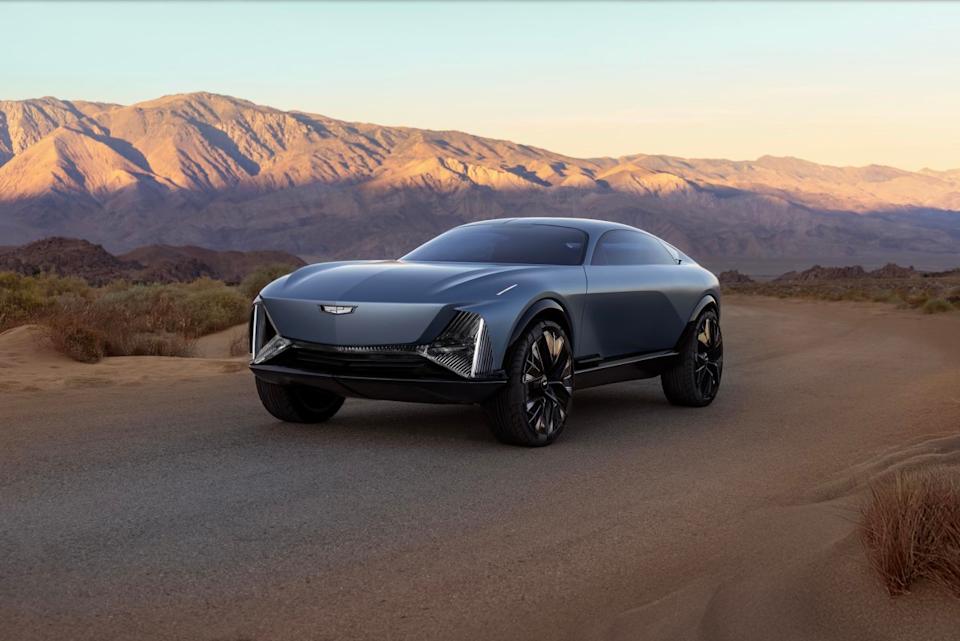
Comments